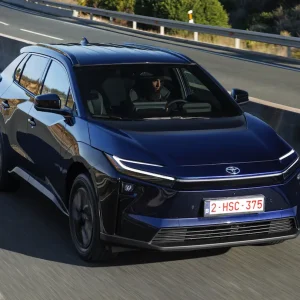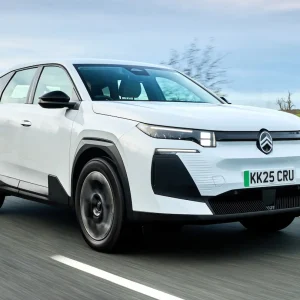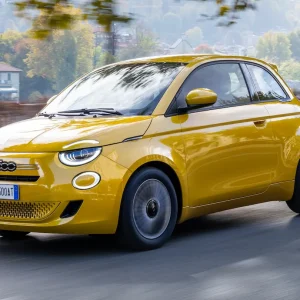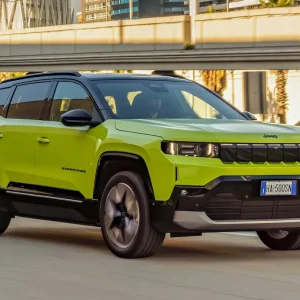Suzuki is a peculiar brand in the UK. Its product offering over the decades has been punctuated by intermittently interesting, stylish and original individual products (Vitara mk1, Swift Sport, Ignis) but which sit among a much more workaday, some would say bland, wider range.
Luckily the regular Swift mk3 continues the ‘intermittently interesting and stylish’ trend as a supermini with positively distinctive looks. The cool wraparound windscreen stays (achieved via blacked-out A-pillars) and the C-pillar is now ‘broken’ by a black hidden rear door handle, which helps the floating roof effect while quietly suggesting coupe vibes (to compensate for no longer offering the slow-selling three-door version).
Euro focus

Suzuki also claims to have made the mk3 Swift even more European customer-focused, by designing in its Italian studio a separate chunkier car – 40mm wider than the Japanese version – and testing it extensively on roads in the UK, Germany and Sweden.
The car has also lost weight, by up to 120kg depending on model and now boasts a tax-beating sub-100g/km CO2 figure for the 1.0 Boosterjet mild hybrid version (denoted by the less than memorable SHVS boot badge, which stands for Smart Hybrid Vehicle by Suzuki).
Sales
Suzuki UK has big plans for the new Swift, seeking to sell 20,000 per annum in a full year (of which about 4000 are earmarked for fleet). Such a move would see the car catapult into the top ten of the UK supermini sales chart (from its current 18th spot) and far exceed its recent 2015 13,000 sales high.

The Swift’s success is essential in assisting the brand’s aim to double its 2016 fleet sales tally of 5225 by 2019 and eventually get to 20,000 annual fleet sales – a figure never before contemplated by the previously retail-focused marque.
UK boss Dale Wyatt said his aim was to “better balance” Suzuki’s fleet and retail sales split but said that the bid would not involve chasing unprofitable channels, cautioning, “not vanity business, but sanity business.”
Driving
Stepping past the smart exterior and opening the door to the interior, the cabin feels spacious upfront and decent for its class behind – helped by an extended wheelbase over the previous version and a lower seating position to boost headroom. Boot size has been increased too, by 54 litres compared to the old Swift, to 265 litres (seats up).
The centre colour touchscreen satnav is okay but not outstanding, a little sluggish in response times and not standard until the top-spec SZ5 trim. Even in top trim the dashboard and door panels feel hard, harsh and a bit of a throwback with their ‘orange peel’ texture. The gloss white fillet between upper and lower dash, offsets this feeling a bit.

Out of the petrol-only engine line-up made up of a 90hp 1.2 & 4×4 hybrid, plus a 111hp 1.0 & mild hybrid – the 1.0 hybrid manual is the pick of the bunch compared to the 1.2 manual. The former is higher powered (111 vs. 90hp), comparable on economy (both 65.7mpg) and lower on CO2 (97 vs. 98g/km).
The 1.0 is perky enough for most manoeuvres but comes with the associated noise you’d expect from a three-cylinder unit. Steering and brakes feel fine but the ride was poor in places, the car’s suspension crashing over bumps and potholes too readily.
Safety kit for a car so small was impressive, and in top trim includes autonomous emergency braking – what Suzuki calls Dual Sensor Brake Support (DSBS) – although it seemed a little oversensitive, like many similar systems from other brands, beeping and flashing too early for this tester.
Conclusions
Prices have yet to be formally announced but as Suzuki no longer offers a three-door Swift, the range is expected to start a little higher, perhaps at £9500, and rise to circa £14,500 for the top-end 1.2 4×4 automatic. Whether the Swift has sufficient qualities to attract the customers Suzuki’s seriously ambitious sales targets demand – against increasingly tough opposition including Skoda, Kia, Seat and Hyundai – we’ll have to wait and see, but this version is certainly a good evolution of an already successful and appealing car.





